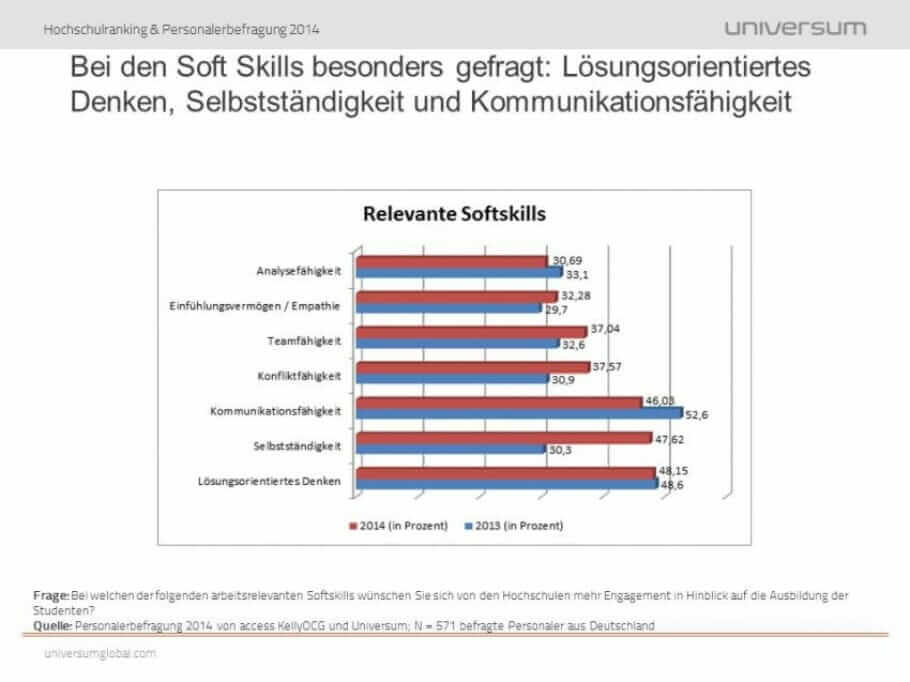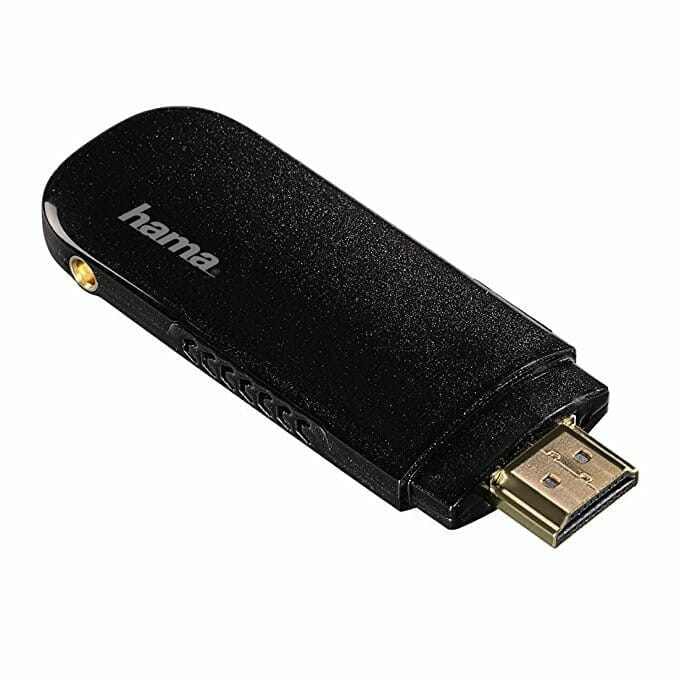Your shopping cart is currently empty!
For their successful, good life Information you really need: Government-funded publisher, awarded the Global Business Award as Publisher of the Year: Books, Magazine, eCourses, data-driven AI-Services. Print and online publications as well as the latest technology go hand in hand - with over 20 years of experience, partners like this Federal Ministry of Education, customers like Samsung, DELL, Telekom or universities. behind it Simone Janson, German Top 10 blogger, referenced in ARD, FAZ, ZEIT, WELT, Wikipedia.
Disclosure & Copyright: Images created as part of a free collaboration with Shutterstock.
Recruiting trends & application practice 2016: 3 X 5 application trends & business ideas {trend! Study}
By Simone Janson (More) • Last updated on October 18.03.2016, XNUMX • First published on 18.03.2016/XNUMX/XNUMX • So far 5312 readers, 1743 social media shares Likes & Reviews (5 / 5) • Read & write comments
The current monster study addresses the question: how to see Companys and job seekers the application process Future? With sometimes surprisingly bizarre results and potential for new business ideas, for example in the field of robots Recruiting.

- The media mix becomes more confusing
- 5 bogus application trends
- Employers and applicants with different ideas
- Business idea for form applications
- Letter and mail lose their importance
- Mobile Recruiting
- The 5 most important results on the topic of application:
- Technology-based recruitment
- 5 unused opportunities of robot recruiting
- Conclusion: talking together helps!
The media mix becomes more confusing
The good news: there are for Candidate and companies more and more opportunities to find each other. The bad news: The media mix is getting bigger and more confusing - and Recruiter increasingly need help to keep track.
Although companies are reaching more and more applicants in this way, they also receive more and more unqualified applications, which they first sift through and (from)sortieren must. It is therefore important to address the right applicants as precisely as possible via the right channels.
5 bogus application trends
A few laughs with a serious background: The study also has some bizarre results and trends to offer, for example on the subject of men and Women, home office or Further Training.
- The topic of further education, which is often a necessary evil in German companies, is increasingly becoming an employer branding topic - and perhaps even more important.
- Employees are particularly dissatisfied with the lack of career opportunities in companies and the poor information transfer in companies. Smoothies and table skaters, on the other hand, are only interested in the edge.
- Men see it as advancement if they get more budget responsibility, for women the home office is more important - that shows deeply ...
- It is a myth that the GenY salary is not as important as, for example, home office: A good salary is the basis, factors such as home office come on-top.
- And something else on the subject of women: Apparently they expect more feedback than men that the application has been received, otherwise they quickly get nervous.
Employers and applicants with different ideas
In addition, one thing is especially noteworthy about the results of the study: Employers and applicants still have different ideas - especially with regard to application submissions: 75 percent of the surveyed companies prefer the form application, 23 percent can also use one eMail-Application friends and just 1 percent prefers to receive it by post.
A look at the responses from job seekers, on the other hand, shows that only 7,6
Percent want to fill out a form - for 6,8 percent this requirement would even be
constitute a reason not to apply for the position. With 83,1 percent, the E-
Mail is number 1 of the most popular application channels for applicants. They also find it annoying when they have to fill out two different forms for the same group of companies.
Business idea for form applications
Companies should urgently improve this or a clever technical solution is needed Solution, with which such application ideas can be temporarily saved and transferred to the next form. Smart minds ahead!
After all, many companies want more form applications, which they can easily incorporate into their application management systems. Employers also expect a veritable trend here (17,3 percent more in 2020) and a decline in the market eMail-Bewerbungen. After all, companies are still expecting applicants to follow their wishes.
Letter and mail lose their importance
In fact, the top 1.000 companies receive over half (48,9 percent) of their applications by form, 36,1 percent via eMail and 13 percent by mail.
But there is also a common denominator: the personal Write to is gradually losing relevance - both parties are convinced of that. So-called short profiles with the most important data and facts about the person, on the other hand, are considered to be increasingly important, and links and references are also becoming increasingly important.
Mobile Recruiting
That has something to do with her clear increased use of mobile devices - even if there are still surprising discrepancies here: the majority of applicants still prefer to use the desktop Job Search. And: Employer branding, job search and the application process should always be considered separately with regard to mobile, as they are very different processes that are unfortunately often lumped together as “mobile recruiting”.
Almost half of those interested in a career consider the profiles on career networks and Internet-Job exchanges as personally very important, especially in order to be able to stand out from other applicants.
The 5 most important results on the topic of application:
- Number: There are an average of 48 for a job advertisement
Applications, 19 of which will be examined in more detail. - Form: 3 out of 4 companies prefer the application form, 83,1 percent
of job seekers, on the other hand, the eMail-Canditature. - Content: 98,9 percent of the top 1.000 companies consider videos and
Infographics are not (yet) an important part of an application, but infographics are seen as more important than videos. - Type: Two thirds of the job seekers surveyed rate personal contacts
and references as an important selection criterion for the application. - Media: Mobile recruiting is important just to address suitable target groups in the course of employer branding. However, finding a job for applicants is a deadly business - and 66,2 percent prefers to do it at home on their desktops.
The results show that companies and job seekers disagree on some aspects of the application. Objective it should be to bring both parties together and to find common standards. Clear Communication on the part of the company as well Feedback of those interested in a career are essential.
Technology-based recruitment
Technology-assisted recruiting now offers more opportunities than ever to attract both
Bringing parties together is made clear by the topic special “Technological leap in the
Recruitment". The selection ranges from robot recruiting to gamification to
Applicant management systems. However, these possibilities are still growing
discussed as used - companies and job seekers differ
By the way, hardly.
One third of the companies surveyed (37,6 percent) and one third of the
Job seekers and those interested in a career (35,7 percent) are the Opinionsthat
modern forms of communication must be used more in the future and
35,7 percent of companies expect the same from each other
and 37,8 percent of job seekers.
5 unused opportunities of robot recruiting
That the Implementation does not yet meet these requirements, a look at some of the instruments and channels examined shows:
- The so-called “Robot Recruiting” - in which an algorithm
Job seekers automate vacancies or vice versa companies
recommends suitable candidates - for example, only 2,4 percent of the
Top 1.000 companies. Accordingly, also give 43,3 percent of the
Job seekers say they have never used this opportunity and 27
Percent she is completely unknown. - It looks similar when using recruiting games. With the under
Online games known as “gamification” are requirements
and skills are matched in a playful way. Less than 2,5 percent of the
Companies offer such games on their careers website or on
social network platforms. The play instinct is a little bigger with them
Job seekers: 12,9 percent are suitable for an open position
checked before using an online game. - The use of instant messaging services such as WhatsApp
is not yet highly relevant. Only 1,3 percent of those questioned
Companies enable candidates to communicate via WhatsApp
and are thus in line with 95,9 percent of job seekers and those interested in a career who have never used this service to communicate with companies. - Recruiting based on new technologies still has to deal with the “everyday
However, fighting gravity ”offers decisive advantages: Recruitment processes
can thus be designed more efficiently and both job offers and applicant profiles
be published through significantly more channels. - The key to success lies in the right mix of instruments and channels. To the
It will always be the case for companies to address suitable candidates in the best possible way
It becomes more important to know their usage habits and preferred channels
and adjust your recruiting accordingly.
Conclusion: talking together helps!
New ways such as active sourcing, an increasing number of application forms as well as technology-supported instruments and channels keep recruiting management constantly in motion - always with the aim of optimizing the processes. For companies as well as for job seekers and those interested in a career, it is not always light to keep up with these developments and to orientate oneself.
But it only becomes critical when both parties don't go in the same direction - and that's exactly what's happening. But the good news is: with clear communication and that Background to the needs the respective target group, this trend can be reversed.
Here writes for you
 Simone Janson is publisher, Consultant and one of the 10 most important German bloggers Blogger Relevance Index. She is also head of the Institute's job pictures Yourweb, with which she donates money for sustainable projects. According to ZEIT owns her trademarked blog Best of HR – Berufebilder.de® to the most important blogs for careers, professions and the world of work. More about her im Career. All texts by Simone Janson.
Simone Janson is publisher, Consultant and one of the 10 most important German bloggers Blogger Relevance Index. She is also head of the Institute's job pictures Yourweb, with which she donates money for sustainable projects. According to ZEIT owns her trademarked blog Best of HR – Berufebilder.de® to the most important blogs for careers, professions and the world of work. More about her im Career. All texts by Simone Janson.
9 Answers to "Recruiting Trends & Application Practice 2016: 3 X 5 Application Trends & Business Ideas {Trend! Study}"
-
[…] Https: //berufebilder.destudy-recruiting-application-trends-business-ideas/ […]
-
RT @marcusfischer: 8:12 am #RecruitingTrends & Application Practice 2016: 3 X 5 Application Trends & Business Ideas via @berufebilder https: //t.…
-
Study #Recruiting Trends & #Beerbungspraxis 2016 - 2/2: - Recommended contribution HWYHHGNFil
-
8: 12min #RecruitingTrends & Application Practice 2016: 3 X 5 application trends & business ideas via @berufebilder - Recommended contribution nsfcOW7u5B
-
Study Recruiting Trends & Application Practice 2016 - 2/2: 3 X 5 application ...Berufebilder.de (Bl ... - Recommended contribution OWNaYKDggW #trend #trends
-
RT @jobcollege: Study Recruiting Trends & Application Practice 2016 - 2/2: 3 X 5 Application Trends & Business Idea ... - Recommended contribution VN0czq2DqD # ...
-
Study Recruiting Trends & Application Practice 2016 - 2/2: 3 X 5 Application Trends & Business Idea ... - Recommended contribution VN0czq2DqD #Profile #Production
-
RT @SimoneJanson: Study Recruiting Trends & Application Practice 2016 - 2/2: 3 X 5 Application Trends & Business Ideas - - Recommended contribution v4PeiZKIuj
-
RT @SimoneJanson: Study Recruiting Trends & Application Practice 2016 - 2/2: 3 X 5 Application Trends & Business Ideas - - Recommended contribution v4PeiZKIuj








Post a Comment